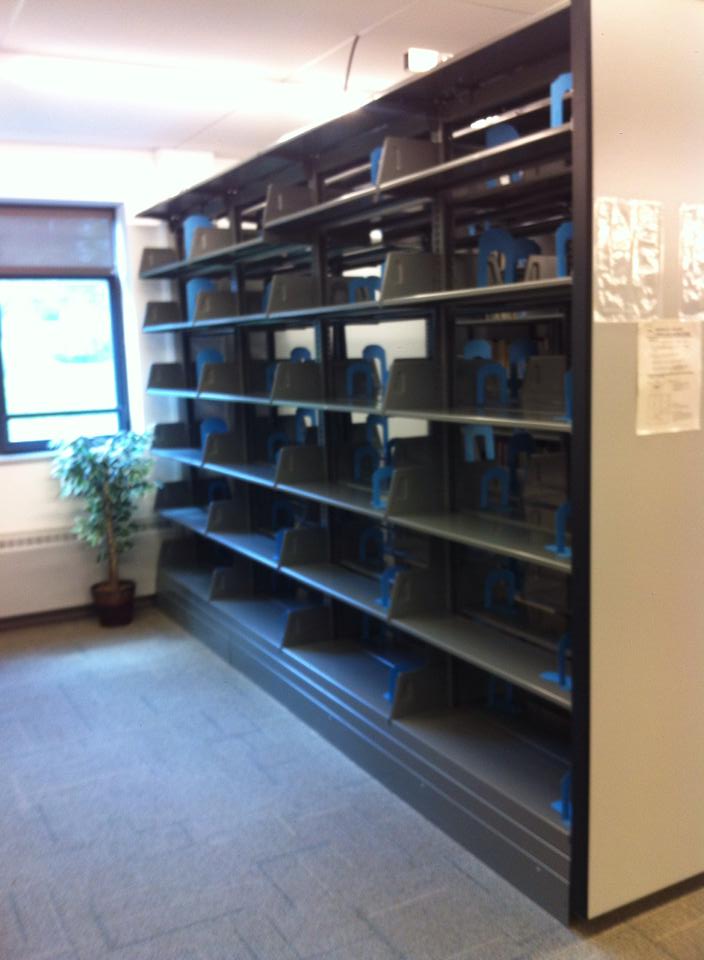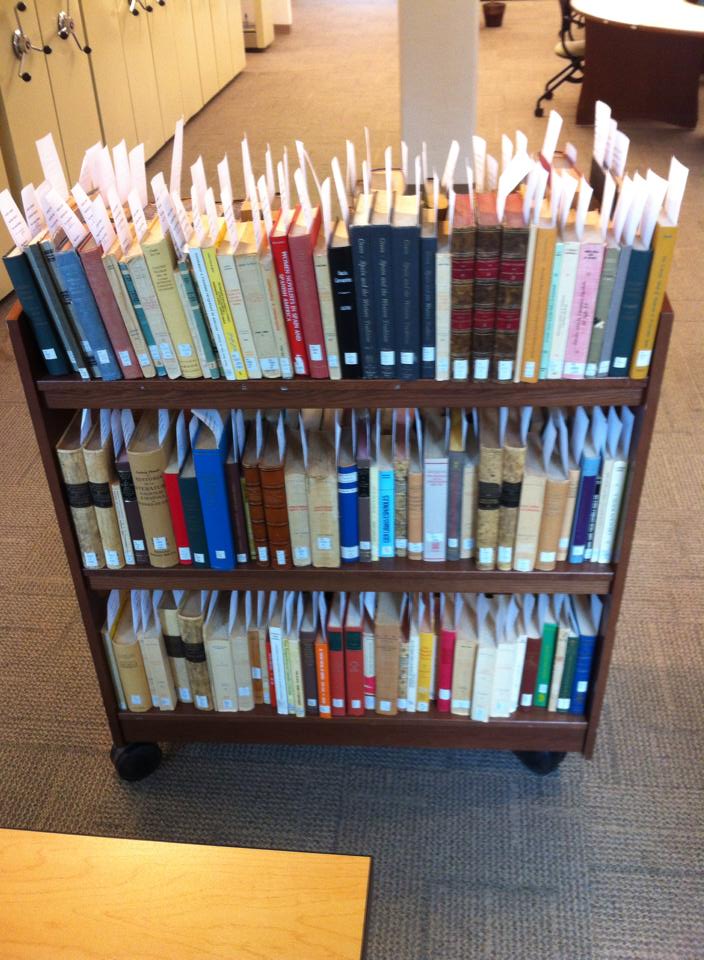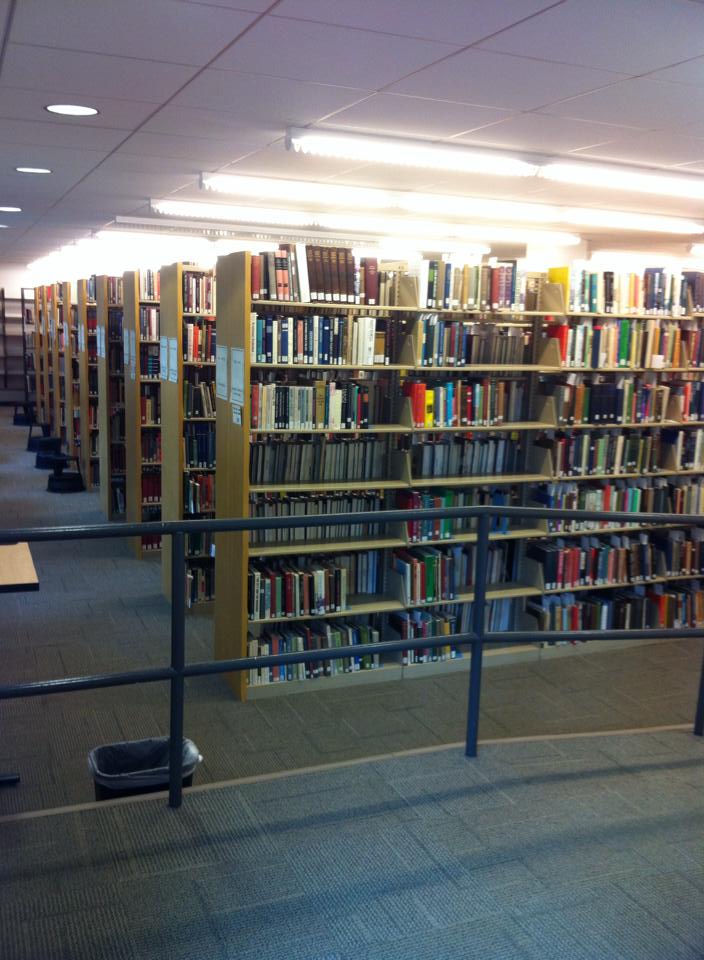
What’s going on at Herrick? Why are there so many empty shelves? Where are those books going? What will be done with the space that becomes available?
Part of the project involves moving most of Herrick’s art books to Scholes. Herrick built a collection of art books to meet a need in the distant past. Now those books are joining the books in the Scholes collection to make art research just a little easier. This has been an ongoing project for several years.
The other reason for all this activity is a re-evaluation of the entire library collection. It’s been many, many years since all the books in the library collection have been reviewed to see if they are still relevant and useful to AU students and faculty.

To start the evaluation process the library staff identifies older books that haven’t been used for 20 years or more. Then faculty members in each subject area evaluate the possible removals to ensure that we don’t lose important works in the subject areas which support our curricula, just because those books haven’t been used recently.
The next step is to identify which books might be of use to others. We send many of the items we remove to Better World Books, which supports literacy initiatives in developing countries. They sell used books through their web site to fund those initiatives. So its a win-win situation. We feel better about the books leaving the library, because we know they may now get into the hands of someone who will use them. And literacy is something near and dear to our hearts, so we’re happy to support efforts to improve literacy world-wide.
All of this evaluation and “slimming-down” of the collection will create a fair amount of new floor space — what will it be used for?

The top floor of the east wing (next to Alumni Hall) is slated to be transformed into a new space for the Center for Academic Success and the Writing Center which will come together to create special areas for writing assistance, tutoring, testing and other services. When combined with the ITS HelpDesk and the library services already in place, it will make Herrick a “one-stop-shopping” location for academic support services.
We’ve still got a lot of work to do before the Center can be created at Herrick. I want to give a shout out to the many faculty members who have volunteered their time to do this important review of the Herrick collection. THANKS!!!
— Steve Crandall